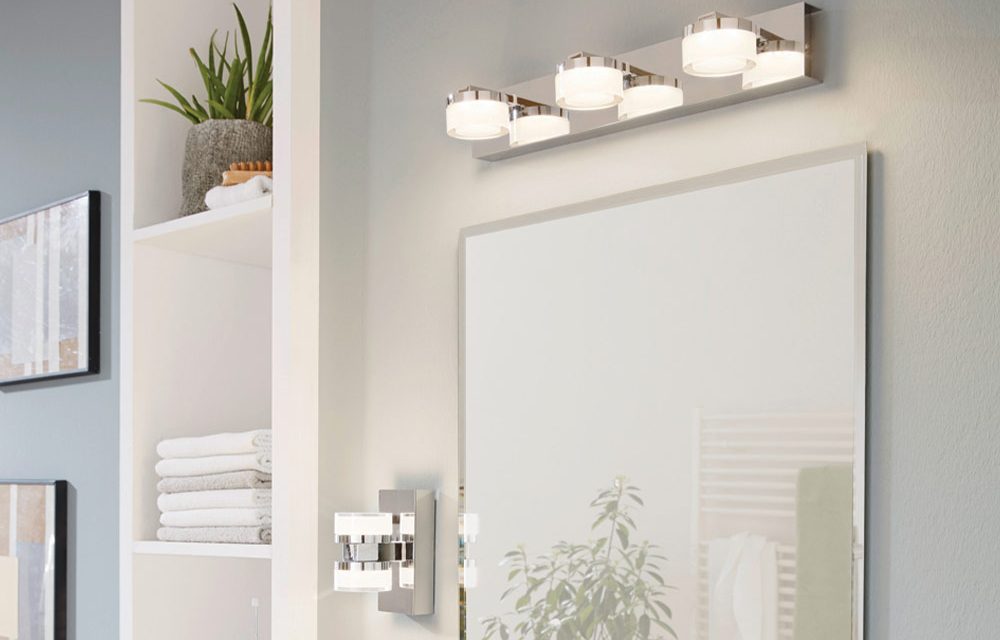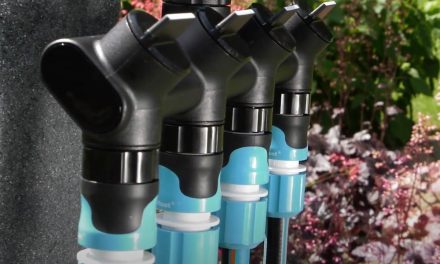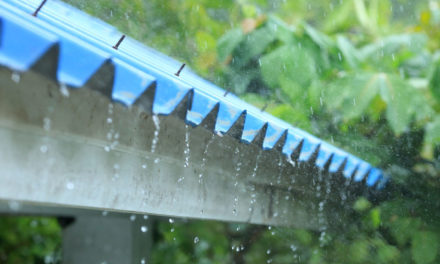Your bathroom is one of the most functional spaces in your home so ensuring that it has the right type of lighting is essential.
Good lighting in the bathroom is not only functional though – well-considered lighting can take your bathroom’s overall aesthetic from drab to fab with the flick of a switch. Here are some of Eurolux Lighting’s tips for lighting your bathroom.
AMBIENT LIGHTING
Ideally, your bathroom’s main source of light should come in the form of downlights. If you’ve decided to go with this option then be sure to choose sealed, waterproof downlights for above the shower as constant exposure to steam can lead to electrical problems further down the line. This said, downlights are costly. If you’re looking for a more budget-friendly option then a circular, sealed fluorescent fitting is the way to go. These offer sufficient light for good visibility and don’t use much electricity. This is also a clever option if the bathroom light in your home gets left on throughout the night for the little ones.
MIRROR LIGHTING
Bathroom mirrors and good lighting go hand-in-hand. The most important thing about mirror lights is that they need to work to make your face look even and shadow-free for the most accurate reflection of yourself. To achieve this shadow-free look, shine the mirror light towards your face instead of shining the light onto the mirror and straight back at you, as you would with a painting. Instead of reflecting the light glare of the fitting, the image reflected in the mirror will be beautifully illuminated.
If the mirror is square, rectangular or round then luminaires on either side of the mirror will illuminate your reflection best. If the mirror is diamond or octagonal in shape then it is advisable to light the mirror from above. Tilted lights on either side of the mirror are guaranteed to give you the best effect. They need to be installed with precision though and work best if positioned as close to the wall on either side as possible.
CABINET LIGHTING
Shine a light on your morning and evening routine by installing lighting in the cabinet under the sink. Under-counter lighting or LED strip lights work well here. You may also want to consider placing a battery-operated touch light in this space. It will come in handy in the event of a power outage.
HEATERS AND EXTRACTOR FANS
Extractor fans in the bathroom draw out the steam from the bath and shower especially when there is little or no natural ventilation. An extractor fan protects electrical components.
Extractors cool the bathroom slightly whereas a heater warms it up. Bathroom heaters are most effective if positioned close to where you stand when you get out of the bath or shower. There are two main options for heating this space. A directional infrared heater will warm you up and also help you dry off quickly. These usually have a light fitting too, which makes them useful as a dual-purpose feature. The second option for heating the bathroom is a bar heater. These are great for warming the whole space, but they take a while to heat up so may not the best option if you bath or shower very quickly, unless it is switched on well before you take that bath or shower.
SENSOR LIGHTS
Spaces that are used infrequently such as a guest bathroom call for sensor lights. These lights only come on when movement is detected and remain on for a set period of time. Sensor lights are programmed to only turn on when the light levels are low so they are excellent energy savers too.
The safety factor
The bathroom is a wet zone in the home so it’s important that the lighting meets certain rules and regulations to keep you safe when using this space.
Below is an explanation of bathroom zones and fixture IP ratings to help you make an informed choice.
Your bathroom is divided up into zones which dictate what type of lighting should be installed to ensure your safety and the longevity and functionality of the fixture.
Zone 0: This area is inside the bath or shower itself. Fixtures used in this zone must be low voltage and rated at least IP67, meaning they are totally immersion-proof.
Zone 1: This area is above the shower or bath and measures approximately 2.25m from the floor. A minimum rating of IP45 is required, but it is advised that a rating of IP65 should be used.
Zone 2: This area stretches 0.6m outside the perimeter of the bath and reaches a height from 2.25m from the floor, requiring a rating of at least IP44. Remember to also consider the area around the basin. A 60cm radius around the tap is considered part of zone 2.
Outside zone: This area is any area of the bathroom not included in zones 0, 1, and 2. It’s a zone where no water is likely to be used. While there are no specific IP requirements for this zone, a rating of at least IP20 is recommended.
You now know that certain IP ratings are required for the different zones, but what exactly does IP mean and why is it important?
IP stands for Ingress Protection and is a rating system used to define how protected the fixture is against particles and water. The first digit represents the level of protection against particles and the second digit represents the protection against water.
First Digit (Ingress of Particles)
0: No Protection
1: Protected against penetration by solid objects 50mm+
2: Protected against penetration by solid objects 12mm+
3: Protected against penetration by solid objects 2.5mm+
4: Protected against penetration by solid objects 1mm+
5: Dust Protected
6: Dust Tight
Second Digit (Ingress of Water)
0: No Protection
1: Protected from vertically falling drops
2: Protected from water drops falling at a max angle of 15°
3: Protected from water as in the rain at a max angle of 60°
4: Protected from splashing or projection
5: Protected from low-pressure jets
6: Protected from high-pressure jets
7: Protected from temporary immersion
8: Protected against long periods of immersion











